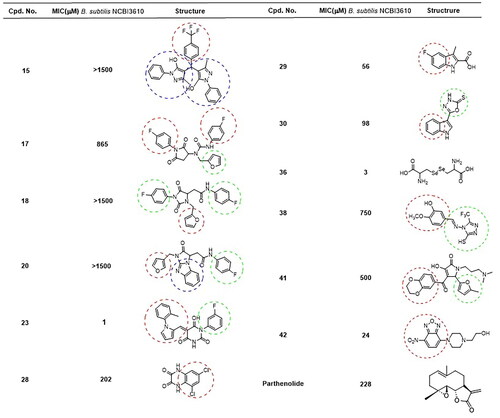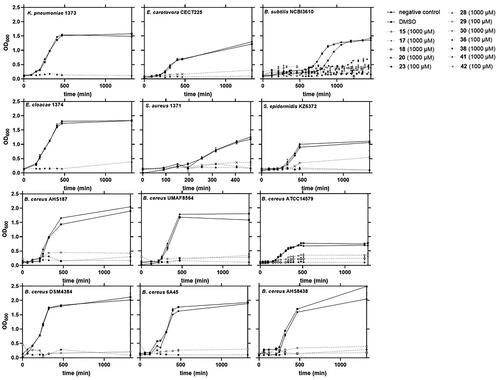Figures & data
Figure 1. Graphic representation of the QSAR strategy workflow for the identification of new compounds with potential antibacterial and anti-biofilm activity.

Table 1. Models predicting antibacterial and antibiofilm activity and statistical parameters.
Table 2. Classification matrix for the training and test set of the three discriminant functions.
Figure 2. Biological distribution diagram for a) antibacterial Gram (+) activity, b) antibacterial Gram () activity, c) biofilm inhibitory activity. Blue histograms represent active compounds, while orange histograms represent the inactive compounds.
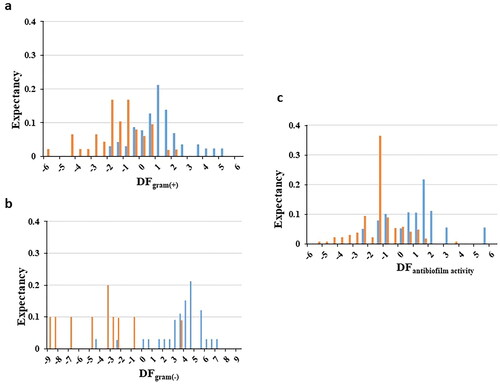
Figure 3. Example of Chi1_EA(dm) and nCp descriptor values for different anti-Gram (+) compounds (training set).
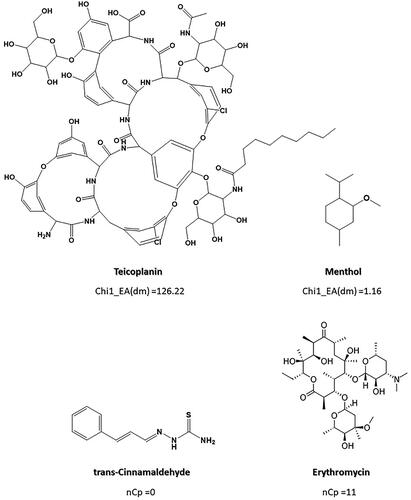
Figure 4. Example of MATS7e, SaaaC and nCt values for different active and inactive compounds from the training set (Gram () activity).
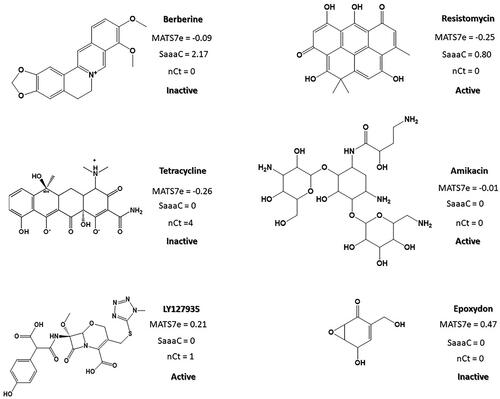
Figure 5. Example of N%, SRW05 and P_VSA_MR_08 descriptors values for molecules with (active) and without (inactive) biofilm inhibition activity.
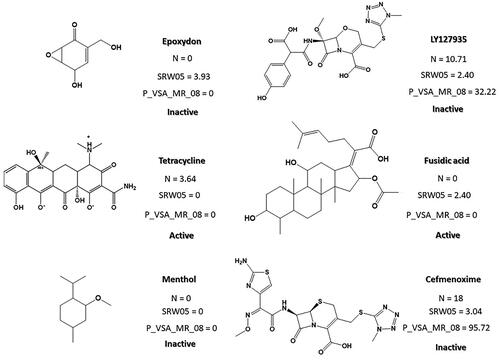
Table 3. List of biofilm-forming bacteria.
Table 4. Biofilm assay with selected strains against molecules with inhibition of bacterial growth at different concentrations.
Table 5. Potential biofilm formation inhibitors according to specific experimental in vitro assays against different strains of Gram (+) and (−).
Figure 6. Biofilm formation by B. cereus 14579, E. carotovora CECT225 and K. pneumoniae 1373 under the effect of active molecules. A control containing DMSO was used to test the effect of the solvent. Each sample was performed in triplicates.
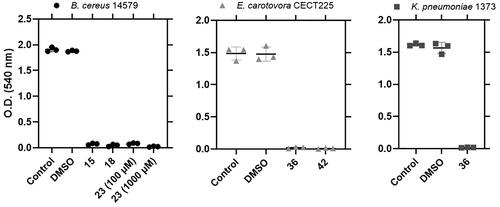
Figure 7. Compounds identified as bacterial inhibitors in the biofilm assay and their minimal inhibitory concentration (MIC) values on B. subtilis. Structural similarity is remarked with the different aromatic moieties. Molecules 36 and 42 also showed activity against the Gram () strains E. carotovora and K. pneumoniae.
